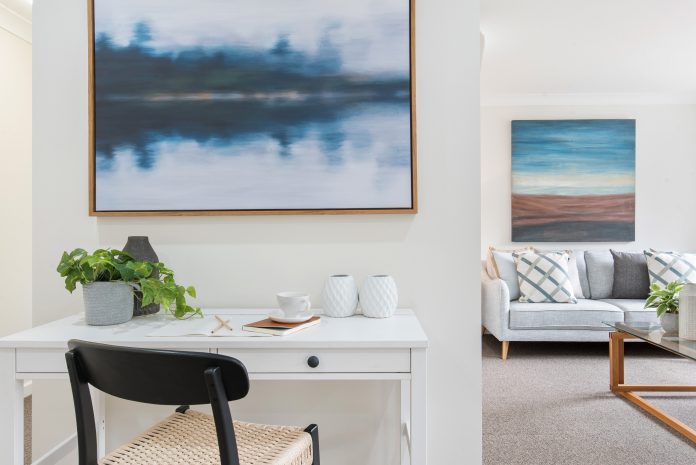Working from home is a luxury, in part because you’ll have complete control of your work environment. If you have a big house, or you’re looking for a new space, you can carve out a completely isolated area for yourself; for example, you can transform the entire basement into a workspace, or spend time modifying a bedroom to accommodate a desk and all the supplies you need to work productively.
But what if you currently live in a small house? Or what if practically all your interior space is already used for something?
Fortunately, there are some ways you can make more space in your house—without having to make major changes, or move.
Main Options
First, understand your main options. If you don’t have a full space to call your own, you can either:
- Create a new space. In this option, you’ll find a way to “create” a new space in your current home. Look at areas that aren’t currently being utilized, like an attic or a basement, or even a section of a room. You may be able to make changes that allow these spaces to become functional—like clearing them of clutter or installing a divider that affords you some privacy.
- Transform another space to be multi-functional. Your other main option is to work with a space that’s currently being used to make it multi-functional. For example, you could rearrange the furniture in your bedroom so it doubles as an office.
Keep these in mind as you explore your home.
Declutter and Organize
One of the most important steps you can take is decluttering and organizing your entire home. Spend time venturing from room to room, getting rid of everything you don’t need or use regularly, and finding an organizational system that allows you to store the rest as efficiently as possible.
This activity is going to serve multiple functions; first, it’s going to clear out physical space, which in some cases, could provide you with enough room to establish a workspace. Second, it’s going to give you a better sense of the space that’s truly available in your home.
Establish Needs and Wants
What would an ideal home office have? More importantly, what are you unable to work without? Your individual preferences will determine what kind of home office you ultimately create. For most home workers, all you need are some basics—a closed-off area with a bit of privacy, an electrical outlet, a desk that can accommodate your computer and a few other materials, and a comfortable chair. Other features, like a window, extra desk space, and extra storage space, are simply luxuries. Take measurements of the amount of physical space necessary for your needs and use this as your baseline.

Identify Opportunities
If you plan on creating a new space, take a look at the newly-emptied areas of your home. Do you now have attic or basement space where you can set up a home office? If so, you may consider finishing these areas and building them out as a full-fledged office space.
Otherwise, consider walking from room to room and creatively imagining what steps you would have to take to install a home office alongside the other features of the room. For example, can you rearrange the furniture in a way that accommodates a desk? Would you be in anyone else’s way, or compromise the functionality of the room by doing this? Are you able to install a partition or another type of divider that divides the room into equal areas? Chances are, you’ll find at least one promising opportunity.
Find an Office Elsewhere
If you’ve tried all these strategies and you still can’t find a way to make a home office “work,” you may not be able to get the home office you need with your current home. If that’s the case, you may consider moving to a bigger space.
If moving isn’t an option, don’t worry—there are still alternative options for you. Due to the surge in remote workers, coworking spaces have become incredibly popular in recent years, so you should be able to find an affordable option near your home. For a flat monthly fee, you’ll gain access to all the amenities of a modern office—and possibly a closed-off dedicated room of your own. If that doesn’t suit you, you can rely on libraries, cafes, and other public places to set up a workstation, and rotate as needed.
No matter what, you’ll have options for creating a dedicated workspace of your own. You may need to spend time tinkering, experimenting, and dealing with less-than-ideal temporary arrangements, but eventually, you’ll come up with something that suits your needs.
Find a Home-Based Business to Start-Up >>> Hundreds of Business Listings.
















































